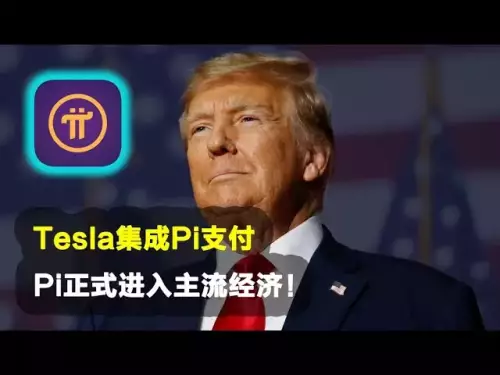-
 bitcoin
bitcoin $117366.968408 USD
0.60% -
 ethereum
ethereum $4611.537173 USD
-0.02% -
 xrp
xrp $3.089373 USD
0.06% -
 tether
tether $1.000286 USD
-0.03% -
 bnb
bnb $986.505381 USD
-0.03% -
 solana
solana $247.629906 USD
0.68% -
 usd-coin
usd-coin $0.999771 USD
-0.03% -
 dogecoin
dogecoin $0.281380 USD
-0.26% -
 cardano
cardano $0.931695 USD
1.71% -
 tron
tron $0.352059 USD
2.40% -
 hyperliquid
hyperliquid $58.226337 USD
-0.94% -
 chainlink
chainlink $24.805082 USD
3.27% -
 avalanche
avalanche $35.625687 USD
10.55% -
 ethena-usde
ethena-usde $1.000922 USD
-0.02% -
 sui
sui $3.883984 USD
2.13%
What are some privacy-preserving computing technologies in Web3?
Zero-knowledge proofs enable private, scalable blockchain transactions by verifying validity without revealing sender, receiver, or amount—enhancing confidentiality and efficiency.
Sep 18, 2025 at 06:54 pm
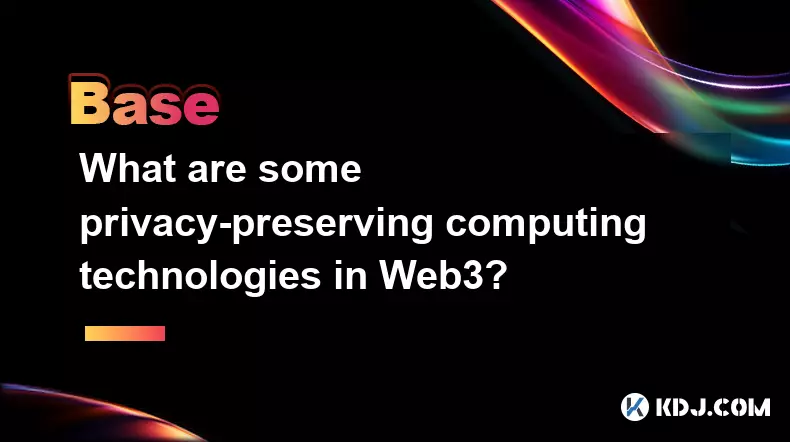
Zero-Knowledge Proofs in Blockchain Transactions
1. Zero-knowledge proofs (ZKPs) allow one party to prove to another that a statement is true without revealing any additional information. In the context of Web3, this technology enables users to verify transactions without exposing sensitive data such as sender, receiver, or amount.
2. ZK-SNARKs, a type of zero-knowledge proof, are widely used in privacy-focused blockchains like Zcash. They offer succinct and non-interactive verification, making them efficient for on-chain validation while preserving confidentiality.
3. Another variant, ZK-STARKs, provides similar privacy benefits but with greater scalability and transparency. Unlike ZK-SNARKs, they do not require a trusted setup, reducing potential vulnerabilities from compromised initialization parameters.
4. Developers are integrating ZKPs into decentralized applications (dApps) to enable private voting systems, confidential asset transfers, and identity verification without exposing personal details.
The use of zero-knowledge proofs fundamentally shifts how trust is established in public ledgers by enabling verifiable computation without disclosure of underlying data.Federated Learning with On-Chain Incentives
1. Federated learning allows machine learning models to be trained across multiple devices or nodes without transferring raw data to a central server. In Web3 ecosystems, this approach aligns with decentralization principles by keeping data localized.
2. Blockchain networks can incentivize participants to contribute computational resources and local data insights through token rewards. Smart contracts automate these payments based on measurable contributions to model accuracy or training speed.
3. Privacy is preserved because only model updates—such as gradient changes—are shared, not the original user data. These updates can also be further protected using differential privacy techniques before transmission.
4. Projects combining federated learning with blockchain often operate in healthcare, finance, and personalized advertising sectors where data sensitivity is high and regulatory compliance is critical.
This synergy between decentralized machine learning and cryptographic incentives creates a new paradigm for collaborative intelligence without centralized data aggregation.Secure Multi-Party Computation for Decentralized Governance
1. Secure multi-party computation (MPC) enables multiple parties to jointly compute a function over their inputs while keeping those inputs private. In DAOs and decentralized governance systems, MPC supports transparent decision-making without exposing individual voting intentions.
2. For example, members of a treasury management group can collectively sign transactions using MPC-based wallets, ensuring no single entity holds full access to private keys while maintaining operational efficiency.
3. Threshold signature schemes derived from MPC are being adopted in custody solutions and validator setups for proof-of-stake networks, enhancing security against key theft or insider threats.
4. Integration with smart contracts allows conditional execution of agreements only when sufficient encrypted inputs meet predefined criteria, all without decrypting individual contributions.
By distributing trust across participants and eliminating single points of failure, MPC strengthens both privacy and resilience in decentralized protocols.Differential Privacy in On-Chain Analytics
1. Differential privacy introduces statistical noise into datasets to prevent re-identification of individuals while still allowing meaningful aggregate analysis. When applied to blockchain analytics, it protects user behavior patterns from surveillance.
2. Indexing services and query layers like The Graph can implement differential privacy when serving data to dApps, ensuring that frequent queries do not inadvertently expose rare or sensitive transaction histories.
3. This technique is particularly valuable in DeFi platforms where transaction timing and amounts could reveal trading strategies or portfolio compositions if analyzed in isolation.
4. Privacy-preserving dashboards and reporting tools leverage differential privacy to provide insights into network usage, liquidity trends, and risk exposure without compromising individual accountability.
Frequently Asked Questions
How do zero-knowledge proofs impact blockchain scalability?ZK-Rollups utilize zero-knowledge proofs to bundle thousands of transactions off-chain and submit a single validity proof to the main chain. This reduces congestion and lowers gas fees while maintaining security and privacy.
Can federated learning work effectively in low-connectivity environments?Yes, federated learning is designed to operate in distributed and intermittent network conditions. Nodes synchronize model updates when connectivity is available, making it suitable for decentralized peer-to-peer architectures common in Web3.
What prevents collusion in secure multi-party computation setups?Cryptographic protocols enforce strict verification of each party’s contribution. Additionally, economic penalties encoded in smart contracts can deter malicious coordination, especially when stake slashing mechanisms are implemented.
Is differential privacy compatible with regulatory audits in DeFi?Yes, auditors can access anonymized datasets with calibrated noise levels that preserve overall accuracy. Regulatory bodies receive compliant reports without accessing personally identifiable information, balancing oversight with user privacy.
Disclaimer:info@kdj.com
The information provided is not trading advice. kdj.com does not assume any responsibility for any investments made based on the information provided in this article. Cryptocurrencies are highly volatile and it is highly recommended that you invest with caution after thorough research!
If you believe that the content used on this website infringes your copyright, please contact us immediately (info@kdj.com) and we will delete it promptly.
- ASTER, PepeNode, and the Crypto Surge: What's the Hype?
- 2025-09-19 19:45:14
- ASTER's Wild Ride: Rally, Unlock, and What's Next?
- 2025-09-19 19:45:14
- MetaMask, Token Launch, and Linea Integration: What's the Buzz?
- 2025-09-19 19:20:01
- Tokens on the Verge: Will Little Pepe or Ripple See the Next Breakout?
- 2025-09-19 19:20:01
- Pudgy Penguins Price Prediction: Fresh Rally Ignites Bullish Hopes
- 2025-09-19 19:26:52
- XRP, BlockchainFX, Crypto Buy: Navigating the 2025 Landscape
- 2025-09-19 19:26:52
Related knowledge
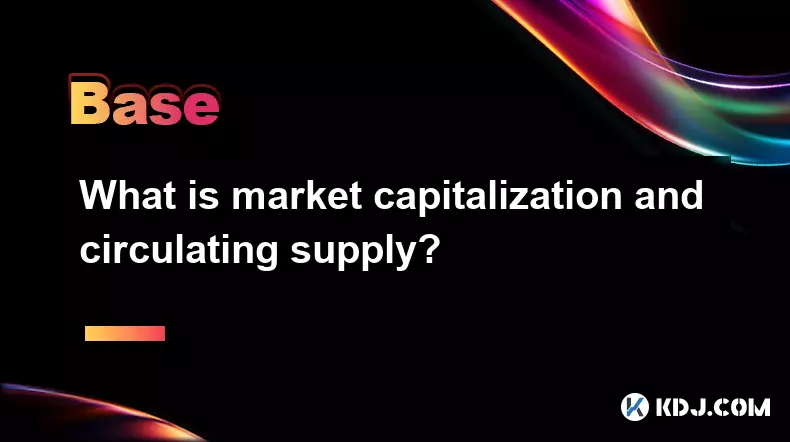
What is market capitalization and circulating supply?
Sep 18,2025 at 09:55pm
Understanding Market Capitalization in the Cryptocurrency Space1. Market capitalization, commonly referred to as 'market cap,' is a metric used to ass...
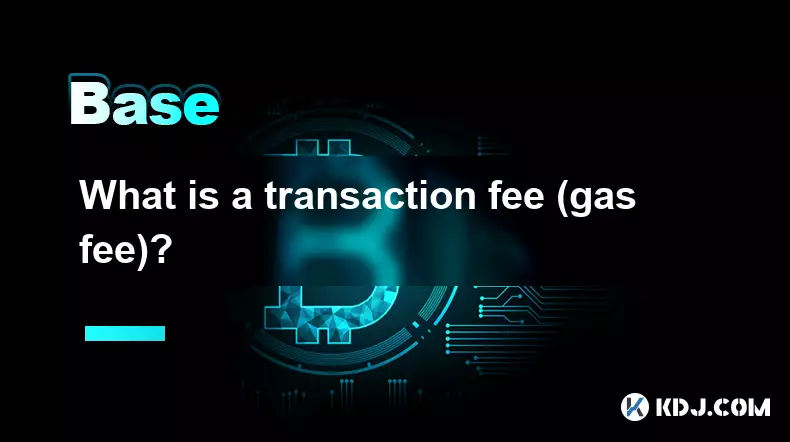
What is a transaction fee (gas fee)?
Sep 18,2025 at 06:36pm
Understanding Transaction Fees in the Cryptocurrency EcosystemTransaction fees, commonly referred to as gas fees in blockchain networks like Ethereum,...
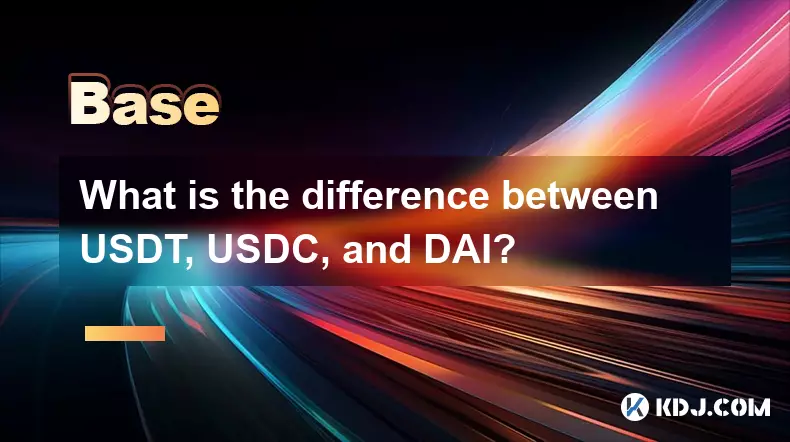
What is the difference between USDT, USDC, and DAI?
Sep 19,2025 at 06:36am
Understanding the Core Mechanisms of USDT, USDC, and DAI1. USDT, also known as Tether, operates as a centralized stablecoin backed primarily by cash a...
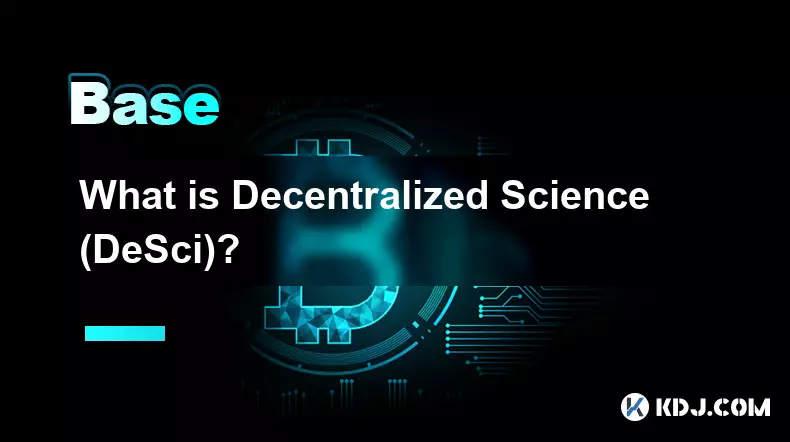
What is Decentralized Science (DeSci)?
Sep 18,2025 at 03:37pm
What is Decentralized Science (DeSci)?Decentralized Science, commonly referred to as DeSci, represents a movement leveraging blockchain technology and...

What's the difference between mining and staking in Web3?
Sep 19,2025 at 03:36am
Mining: The Proof-of-Work Mechanism1. Mining is a consensus mechanism used primarily in blockchain networks that operate under Proof-of-Work (PoW). In...

What are some privacy-preserving computing technologies in Web3?
Sep 18,2025 at 06:54pm
Zero-Knowledge Proofs in Blockchain Transactions1. Zero-knowledge proofs (ZKPs) allow one party to prove to another that a statement is true without r...

What is market capitalization and circulating supply?
Sep 18,2025 at 09:55pm
Understanding Market Capitalization in the Cryptocurrency Space1. Market capitalization, commonly referred to as 'market cap,' is a metric used to ass...

What is a transaction fee (gas fee)?
Sep 18,2025 at 06:36pm
Understanding Transaction Fees in the Cryptocurrency EcosystemTransaction fees, commonly referred to as gas fees in blockchain networks like Ethereum,...

What is the difference between USDT, USDC, and DAI?
Sep 19,2025 at 06:36am
Understanding the Core Mechanisms of USDT, USDC, and DAI1. USDT, also known as Tether, operates as a centralized stablecoin backed primarily by cash a...

What is Decentralized Science (DeSci)?
Sep 18,2025 at 03:37pm
What is Decentralized Science (DeSci)?Decentralized Science, commonly referred to as DeSci, represents a movement leveraging blockchain technology and...

What's the difference between mining and staking in Web3?
Sep 19,2025 at 03:36am
Mining: The Proof-of-Work Mechanism1. Mining is a consensus mechanism used primarily in blockchain networks that operate under Proof-of-Work (PoW). In...

What are some privacy-preserving computing technologies in Web3?
Sep 18,2025 at 06:54pm
Zero-Knowledge Proofs in Blockchain Transactions1. Zero-knowledge proofs (ZKPs) allow one party to prove to another that a statement is true without r...
See all articles


























